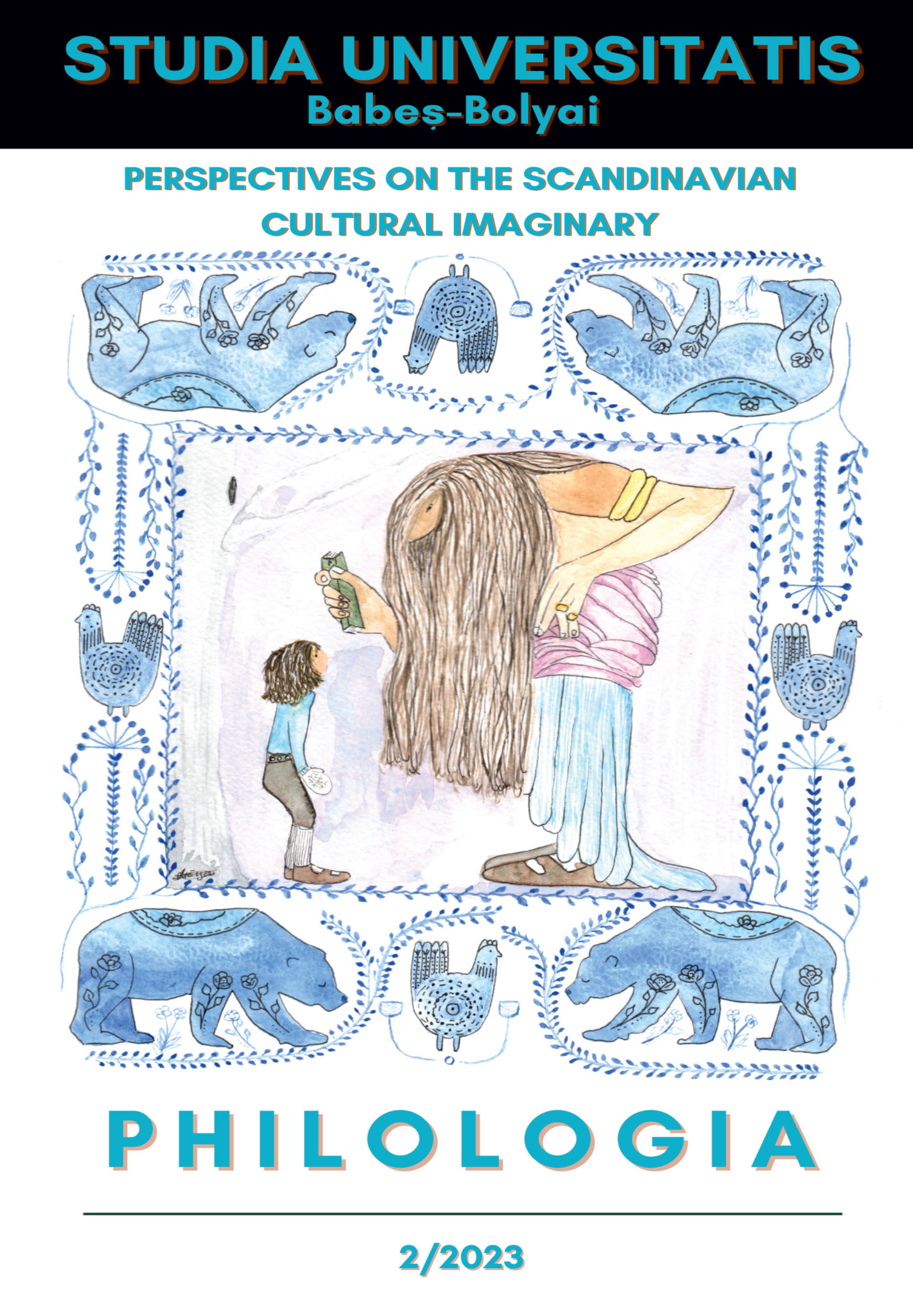SIRÈNES ET AUTRES ONDINES : REPRÉSENTATIONS MÉDIÉVALES DES FIGURES AQUATIQUES SCANDINAVES
DOI:
https://doi.org/10.24193/subbphilo.2023.2.05Keywords:
Middle Age, Scandinavian literature, hybrid representations, mermaid, imaginary of the sea.Abstract
Mermaids and Other Undines: Medieval Representations of Scandinavian Aquatic Figures. Without claiming to be exhaustive, this article compares the different aquatic figures of Scandinavian imagination, and the representations relating to Scandinavia, taking into account their cosmic aspect. This paper highlights the close connection of these creatures with time, weather and music, and the evolution of the representation of sea creatures that embody geography and climate, real or fantasized. These representations evolve, especially because of the important Christianization process that they undergo. With Christianization, these sea creatures tend towards demonization, and they’re influenced by Occidental representations, especially with those of the sirens of the Nibelungenlied. Scandinavian aquatic figures represent different dangers according to the type of water in which they live: salty, soft or marshy. According to their gender, the marine creatures which embody different risks are put in perspective in a comparative approach that links the Eddas and the stories reported by Xavier Marmier, especially Danish and Swedish. Thanks to the privileged bond these figures, emerging from the Edda, sagas and ballads, maintain with speech and music, their evolutions and their representations survive in the collective imagination related to Scandinavia.
REZUMAT. Sirene și alte ondine: reprezentări medievale ale figurilor acvatice scandinave. Fără a pretinde a fi exhaustiv, acest articol compară diferitele figuri acvatice ale imaginarului scandinav și reprezentările referitoare la Scandinavia, ținând cont de aspectul lor cosmic. Lucrarea de față evidențiază legătura strânsă a acestor creaturi cu timpul, vremea și muzica, precum și evoluția reprezentării creaturilor marine, reale sau imaginare, care întruchipează geografia și clima. Odată cu creștinizarea, aceste creaturi marine tind spre demonizare și sunt influențate de reprezentările occidentale, mai ales de cele ale sirenelor din Cântecul Nibelungilor. Figurile acvatice scandinave se disting după pericolul pe care îl reprezintă și după tipul de apă în care trăiesc: sărată, dulce sau mlăștinoasă. Creaturile marine care întruchipează diferite riscuri sunt analizate în funcție de tipologiile enunțate, printr-o abordare comparativă care leagă Edda și poveștile transmise de Xavier Marmier (în special de origine daneză și suedeză). Datorită legăturilor lor privilegiate cu limbajul și muzica, aceste figuri din Edda, saga și balade supraviețuiesc în imaginarul colectiv scandinav.
Cuvinte-cheie : Evul mediu, literatură scandinavă, reprezentări hibride, sirenă, imaginarul apei
Article history: Received 2 February 2023; Revised 28 April 2023; Accepted 30 May 2023;
Available online 23 June 2023; Available print 30 June 2023.
References
Bachelard, Gaston. 1942. L’eau et les rêves : Essai sur l’imagination de la matière. Paris: José Corti.
Boor (de), Helmut. 1959. Das Nibelungenlied. Bremen: Carl Schünemann Verlag.
Boyer, Régis. 1998. La Saga de Gunnlaugr langue-de-serpent et La Saga de Hallfredr le scalde difficile. Paris: Joseph K.
Boyer, Régis. 1997. Héros et Dieux du Nord, guide iconographique. Paris: Flammarion.
Boyer, Régis. 1996. Histoire des littératures scandinaves. Paris: Fayard.
Boyer, Régis. 1992. L’Edda poétique. Textes présentés et traduits par Régis Boyer. Paris : Fayard, coll. « l’Espace intérieur ».
Boyer, Régis. 1987. Saga de Gísli Súrsson. Paris: Gallimard, coll. « Folio ».
Brasey, Édouard. 1999. Sirènes et Ondines. Paris: Pygmalion, coll. « L’Univers Féerique ».
Dronke, Ursula. 1997. The Poetic Edda, vol. II, Mythological poems. Oxford: Oxford University Press.
Edwards, Cyril. 2010. The Nibelungenlied / The lay of the Nibelungs. New York: Oxford University Press.
Guelpa, Patrick. 2008. Trois grands poèmes religieux : Geisli, Líknarbraut, Passíusálmar. Paris: Les Belles Lettres, coll. « Classiques du Nord ».
Harf-Lancner, Laurence. 2003. Le monde des fées dans l'Occident médiéval. Paris: Hachette Littératures.
Larrington, Carolyne. 2014. The Poetic Edda. Oxford: Oxford University Press.
Laveleye (de), Émile. 2000. Les Nibelungen, II. La vengeance de Kriemhilt. Puiseaux: Pardès.
Marmier, Xavier. 1842. Chants populaires du Nord. Paris: Charpentier.
Renaud, Jean. 2017. La saga de Ragnarr Lođbrók / Ragnars saga lođbrókar, suivie du Dit des fils de Ragnarr / Páttr af Ragnars sonum, et du Chant de Kráka / Krákumál. Paris: Anacharsis.
Sturluson, Snorri. 1991. L’Edda en prose : récits de mythologie nordique. Traduit du vieil islandais, introduit et annoté par Dillmann, Francois-Xavier. Paris: Gallimard, NRF, coll. « L’aube des peuples ».
Vial, Hélène. 2014. Les Sirènes ou le savoir périlleux, d'Homère au XXIe siècle. Rennes: Presses Universitaires de Rennes, coll. « Interférences ».
Wagner, Félix. 1936. Les poèmes mythologiques de l’Edda. Traduction française d’après le texte original islandais. Paris/Liège: Droz.
Downloads
Published
How to Cite
Issue
Section
License
Copyright (c) 2023 Studia Universitatis Babeș-Bolyai Philologia

This work is licensed under a Creative Commons Attribution-NonCommercial-NoDerivatives 4.0 International License.





 ©Studia Universitatis Babeş-Bolyai Philologia. Published by Babeș-Bolyai University.
©Studia Universitatis Babeş-Bolyai Philologia. Published by Babeș-Bolyai University.